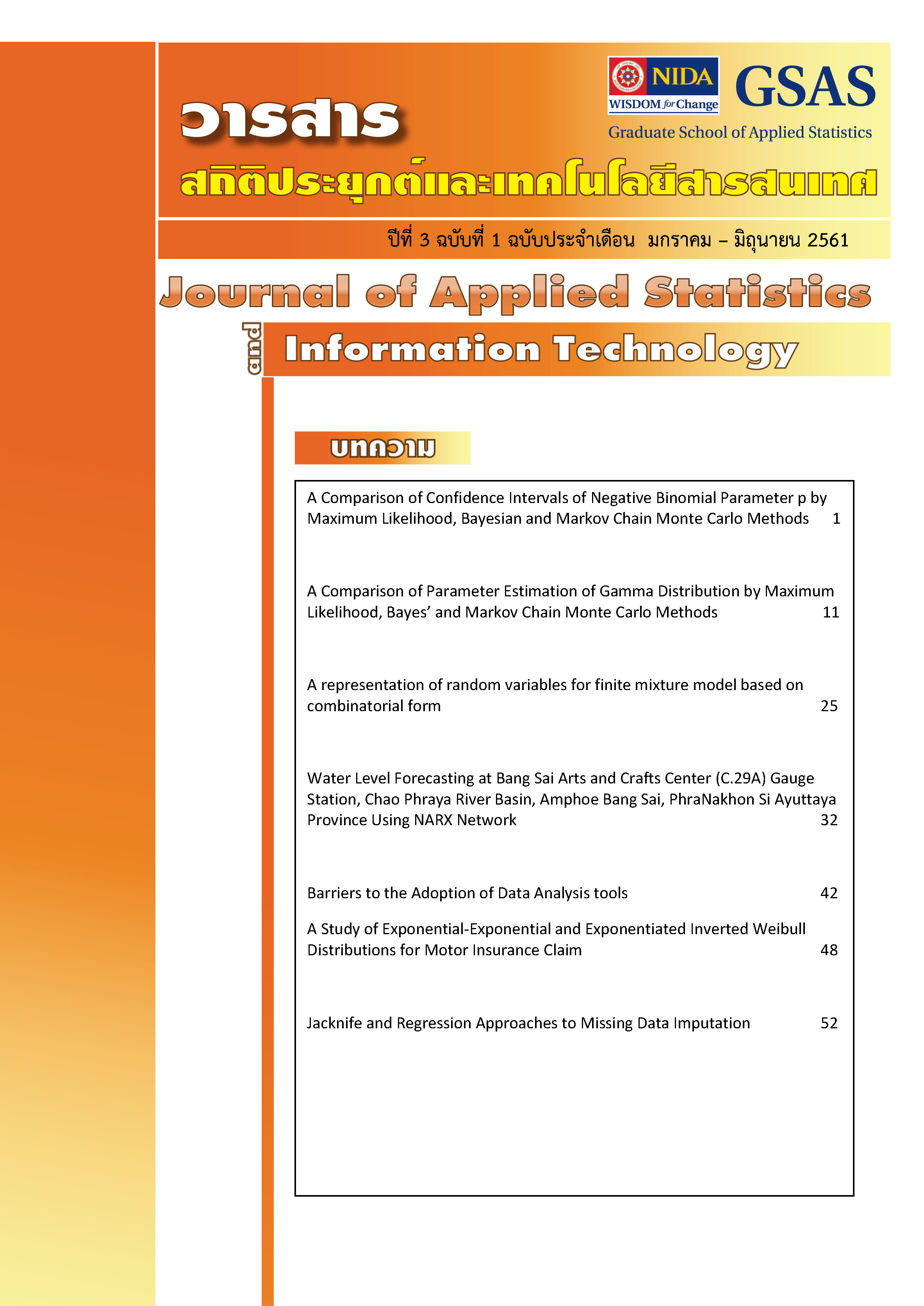Barriers to the Adoption of Data Analysis tools
Keywords:
Business Intelligence, BI, Data Analysis ToolsAbstract
Business Intelligence and data analysis has become a critical aspect for many organizations, and is considered as one of the key drivers for business growth. Data analysis tools can be functioned for dashboards, interactive report, statistic and data mining, localization, analysis, data management, data visualization, and sharing information. In spite of several benefits and functions of data analysis tools, there are some issues regarding the adoption of the tools. This research aims to study the barriers to the Adoption of Data Analysis tools focusing on small and medium-sized enterprises (SMEs). The research process consists of three stages: 1) Literature review 2) Observation and interview of 30 SMEs in Thailand, and 3) Analysis and conclusion. According to the results, barriers to the adoption of data analysis tools are technology barrier, data barrier, human barrier, and organization barrier. The approach to overcome these barriers is proposed. The result can be a guideline for the implementation of BI system to improve profitability and attain the competitive advantages in the organization.
References
[2] Ö. Işık, M. C. Jones, and A. Sidorova, "Business intelligence success: The roles of BI capabilities and decision environments," Information & Management, vol. 50, pp. 13-23, 1// 2013.
[3] S. Williams, "Chapter 2 - Business Intelligence in the Era of Big Data and Cognitive Business," in Business Intelligence Strategy and Big Data Analytics, ed Boston: Morgan Kaufmann, 2016, pp. 27-50.
[4] S. Olbrich, J. Poppelbuß, and B. Niehaves, "Critical Contextual Success Factors for Business Intelligence: A Delphi Study on Their Relevance, Variability, and Controllability," in 2012 45th Hawaii International Conference on System Sciences, 2012, pp. 4148-4157.
[5] A. Z. Emam, "Critical Success Factors Model for Business Intelligent over ERP Cloud," in 2013 International Conference on IT Convergence and Security (ICITCS), 2013, pp. 1-5.
[6] V.-H. Trieu, "Getting value from Business Intelligence systems: A review and research agenda," Decision Support Systems, vol. 93, pp. 111-124, 1// 2017.
[7] M. Pomffyová and L. Bartková, "Take Advantage of Information Systems to Increase Competitiveness in SMEs," Procedia - Social and Behavioral Sciences, vol. 220, pp. 346-354, 2016/05/31 2016.
[8] D. Sen, M. Ozturk, and O. Vayvay, "An Overview of Big Data for Growth in SMEs," Procedia - Social and Behavioral Sciences, vol. 235, pp. 159-167, 2016/11/24 2016.
[9] A. Alharthi, V. Krotov, and M. Bowman, "Addressing barriers to big data," Business Horizons.
[10] P. Cato, P. Gölzer, and W. Demmelhuber, "An investigation into the implementation factors affecting the success of big data systems," in 2015 11th International Conference on Innovations in Information Technology (IIT), 2015, pp. 134-139.
[11] M. P. Bach, A. Čeljo, and J. Zoroja, "Technology Acceptance Model for Business Intelligence Systems: Preliminary Research," Procedia Computer Science, vol. 100, pp. 995-1001, 2016/01/01 2016.
[12] A. Popovič, R. Hackney, P. S. Coelho, and J. Jaklič, "Towards business intelligence systems success: Effects of maturity and culture on analytical decision making," Decision Support Systems, vol. 54, pp. 729-739, 12// 2012.
[13] T. Evgeniou and P. Cartwright, "Barriers to Information Management," European Management Journal, vol. 23, pp. 293-299, 6// 2005.
Downloads
Published
How to Cite
Issue
Section
License
เนื้อหาและข้อมูลที่ปรากฏในบทความที่ตีพิมพ์ในวารสารสถิติประยุกต์และเทคโนโลยีสารสนเทศถือเป็นความคิดเห็นส่วนบุคคลของผู้เขียนแต่ละท่าน ความผิดพลาดของข้อความและผลที่อาจเกิดจากนำข้อความเหล่านั้นไปใช้ผู้เขียนบทความจะเป็นผู้รับผิดชอบแต่เพียงผู้เดียว บทความ ข้อมูล เนื้อหา รูปภาพ ฯลฯ ที่ได้รับการตีพิมพ์ในวารสารถือเป็นลิขสิทธิ์ของวารสาร หากบุคคลหรือหน่วยงานใดต้องการนำทั้งหมดหรือส่วนหนึ่งส่วนใดไปเผยแพร่ต่อหรือเพื่อกระทำการใดๆ จะต้องได้รับอนุญาตเป็นลายลักอักษรณ์จากวารสาร ก่อนเท่านั้น



